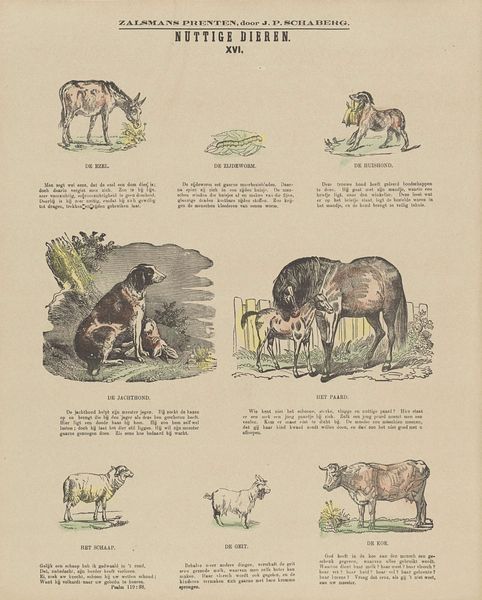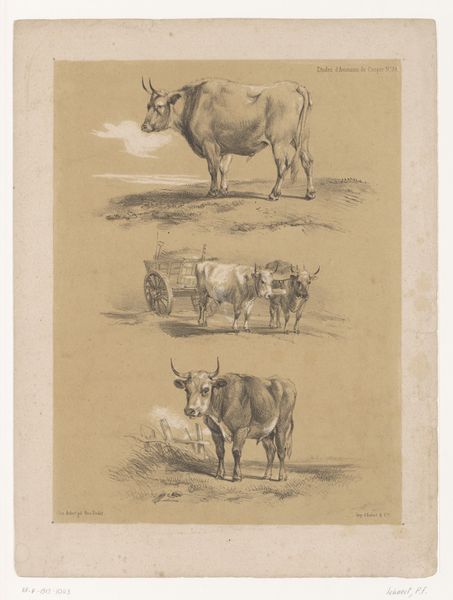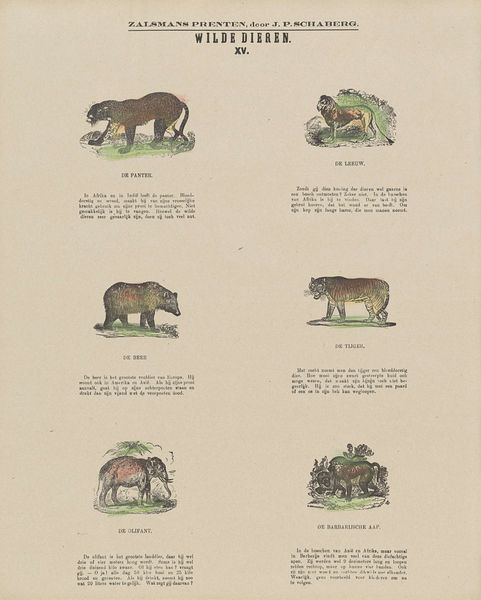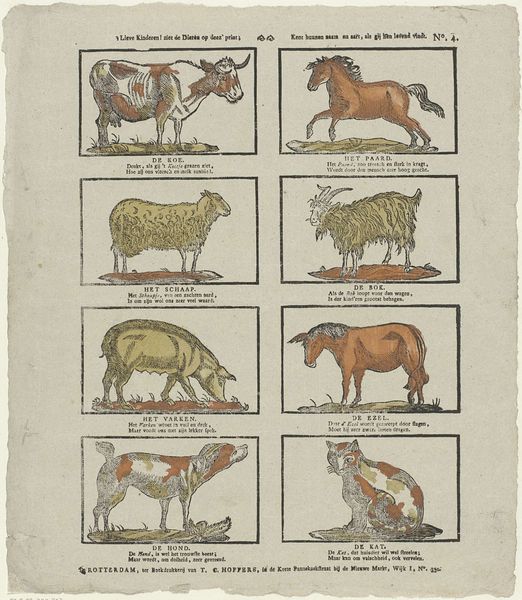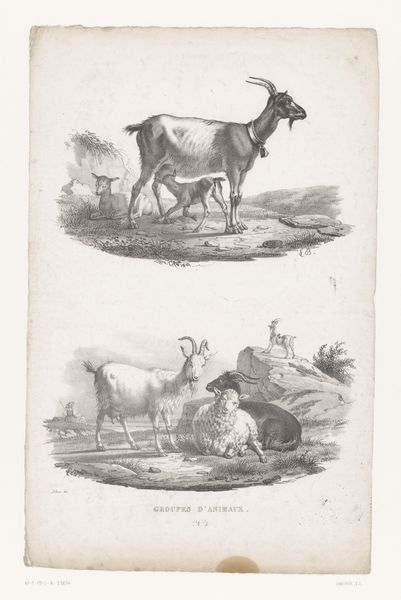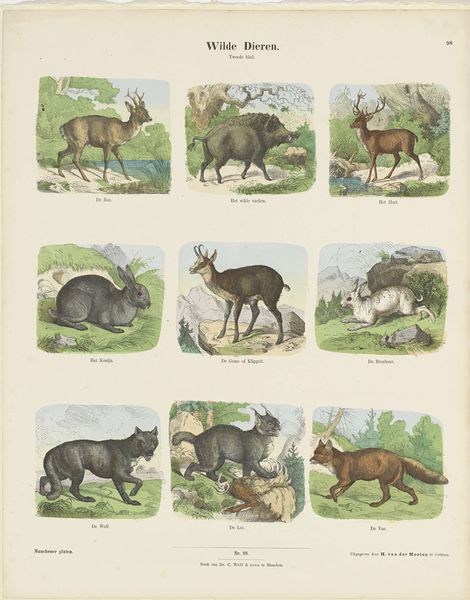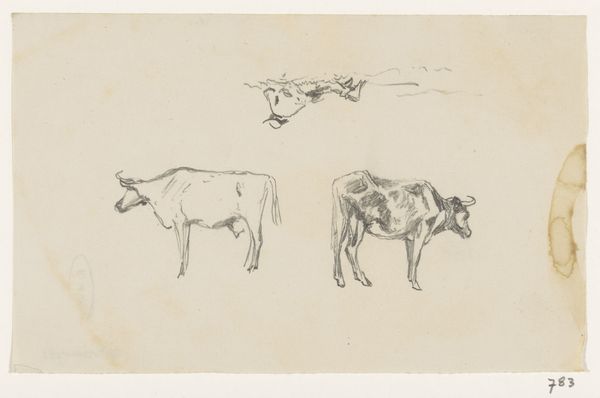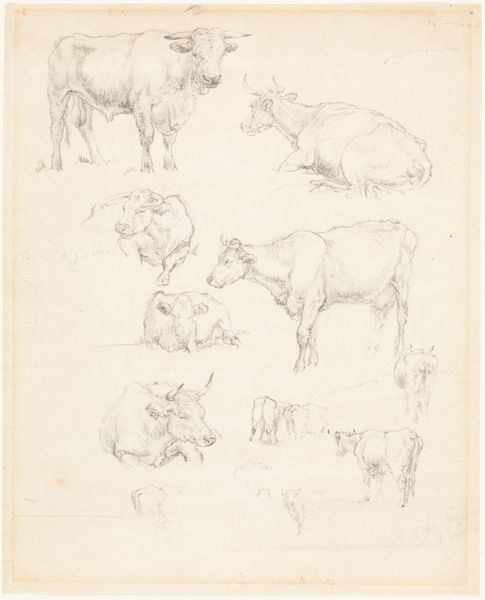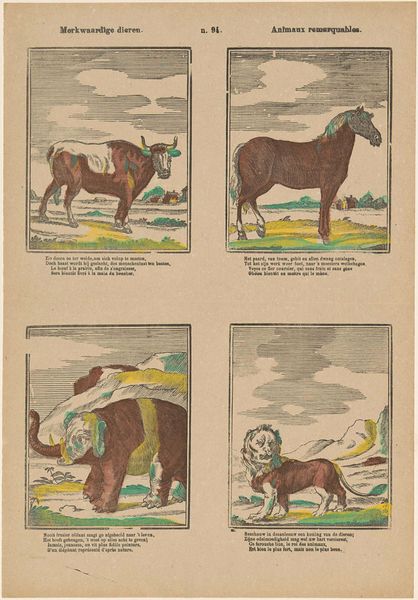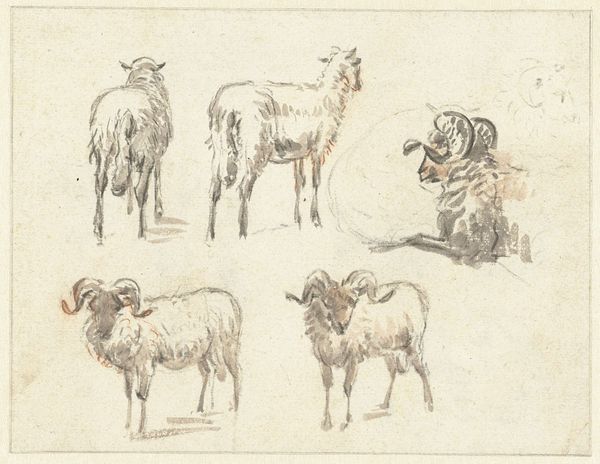
drawing, paper, ink
#
drawing
#
landscape
#
figuration
#
paper
#
ink
#
horse
#
sketchbook drawing
#
watercolour illustration
#
genre-painting
#
watercolor
Dimensions: height 427 mm, width 330 mm
Copyright: Rijks Museum: Open Domain
Editor: Here we have Franciscus Antonius Beersmans' "Dieren," which translates to "Animals," created between 1866 and 1902, using ink and watercolor on paper. The sheet features various livestock; it gives me a vintage scientific illustration vibe. What strikes you when you look at this piece? Curator: I'm interested in the intersection of representation and power embedded in such seemingly neutral depictions. Think about it: who commissions these images? Who is controlling the narrative around agriculture and our relationship with these animals? What socioeconomic structures underpin this vision of rural life? Editor: That's a very different take! I hadn't considered the economic implications at all. I was mostly thinking about it aesthetically. Curator: Right, but the aesthetic *is* political. Why this style? What does the ordered arrangement of livestock tell us about 19th-century societal values related to land and production? Do these idealized images serve to distance us from the realities of animal husbandry and food production, and if so, what does this disconnect mean? Editor: I see what you're getting at. The careful, almost clinical rendering could definitely be seen as a way of controlling and categorizing the natural world for human use. Are you suggesting this kind of image normalizes certain exploitative relationships? Curator: Precisely. Look at the passive poses of the animals; their positioning speaks volumes. Whose interests are being served through this visual vocabulary, and are these depictions complicit in larger power structures? How can we engage critically with this visual language today? Editor: That’s given me so much to think about! I now realize how crucial it is to look beyond just the surface and delve deeper into the context and the socio-political implications embedded within. Curator: Exactly. Let’s challenge these narratives by asking those crucial “who” and “why” questions in everything we analyze and create.
Comments
No comments
Be the first to comment and join the conversation on the ultimate creative platform.
